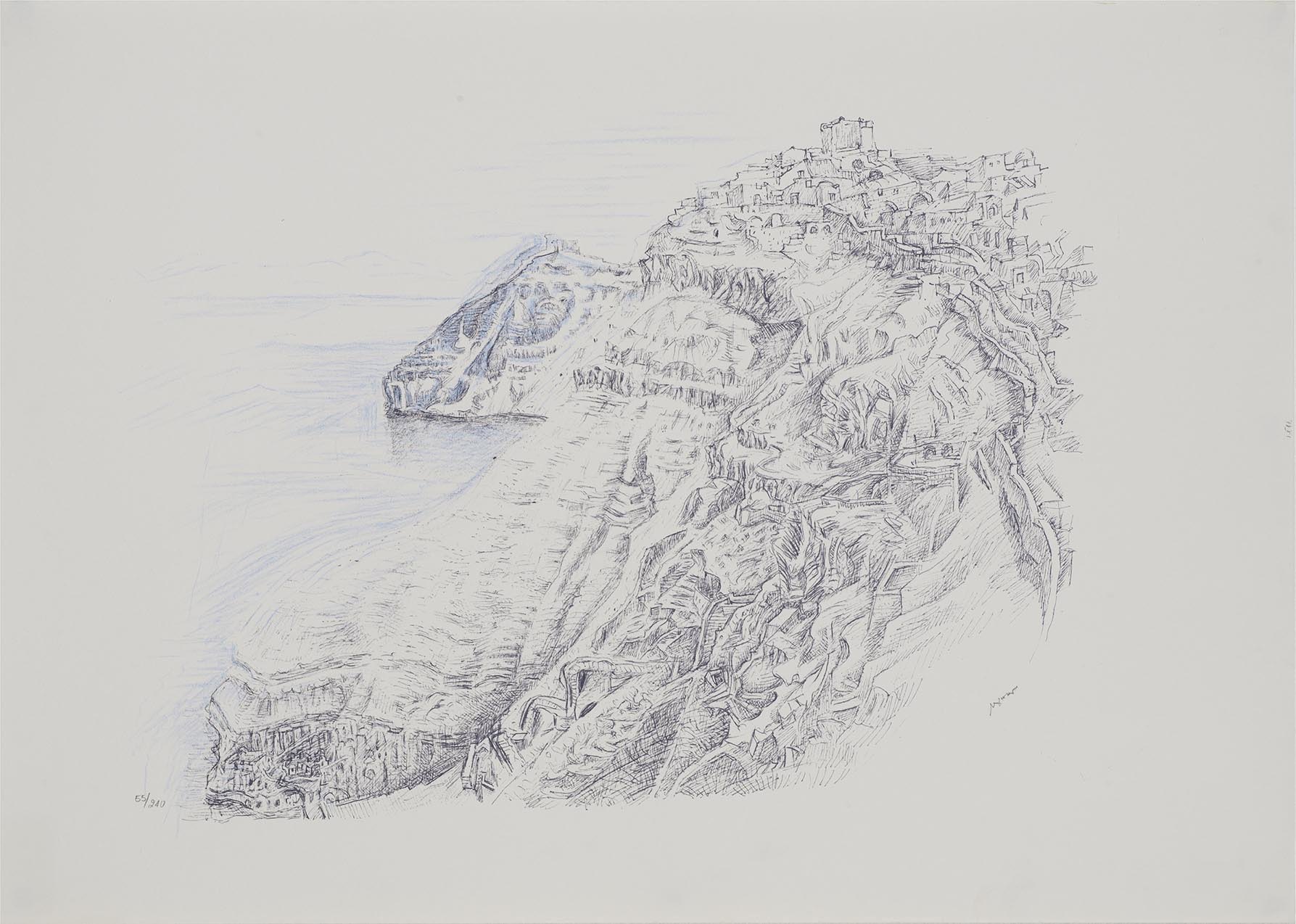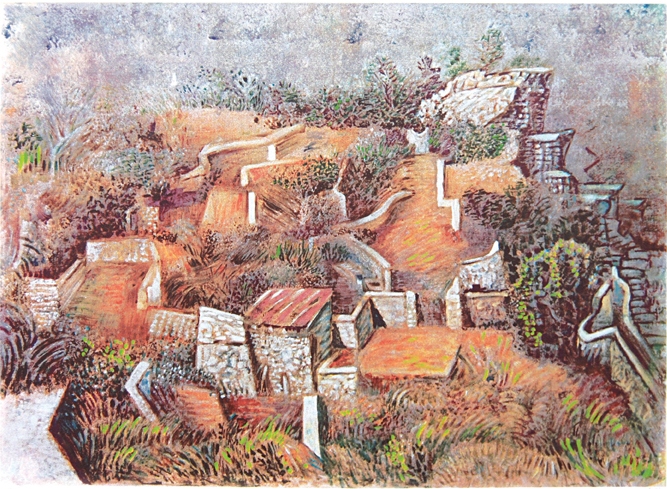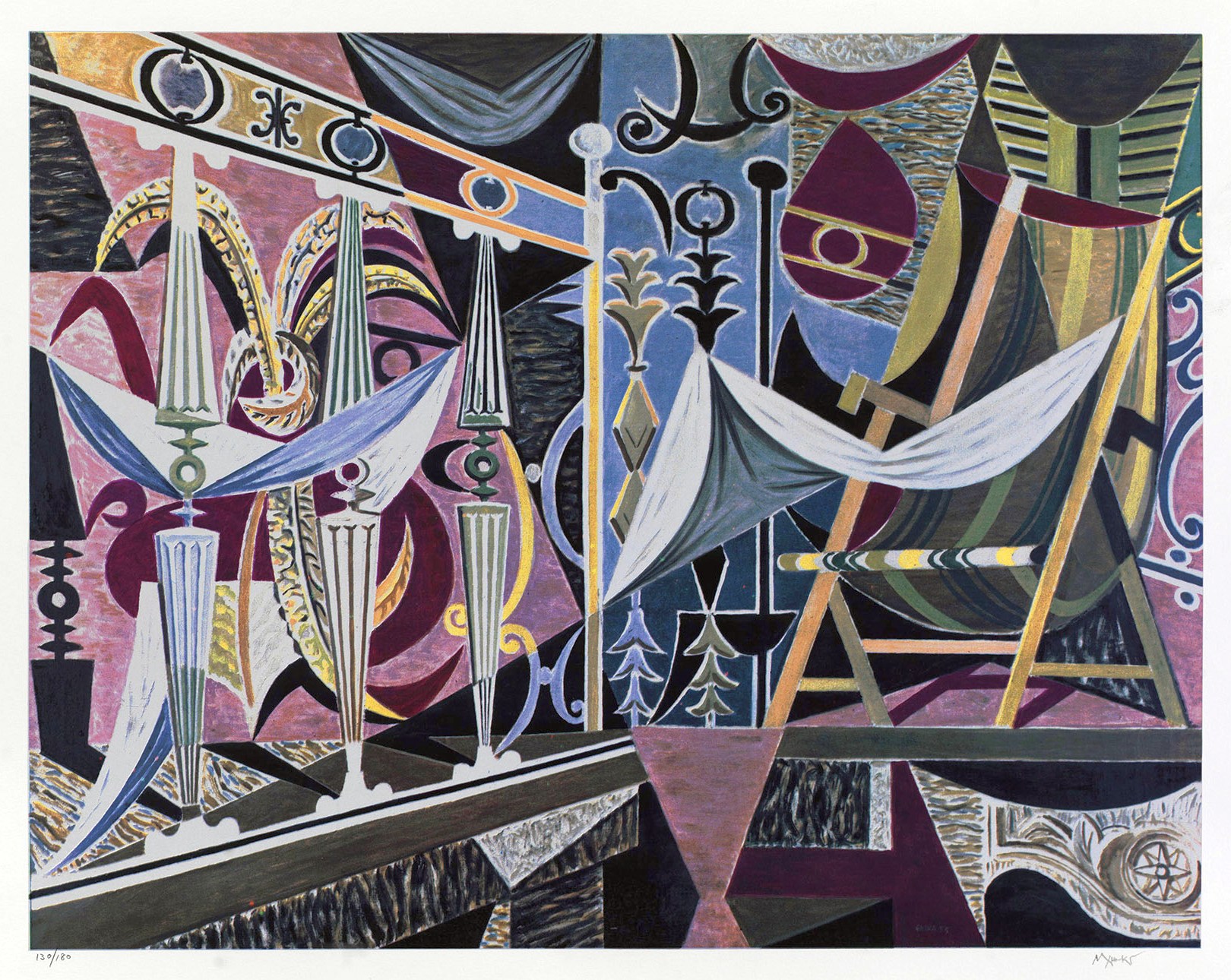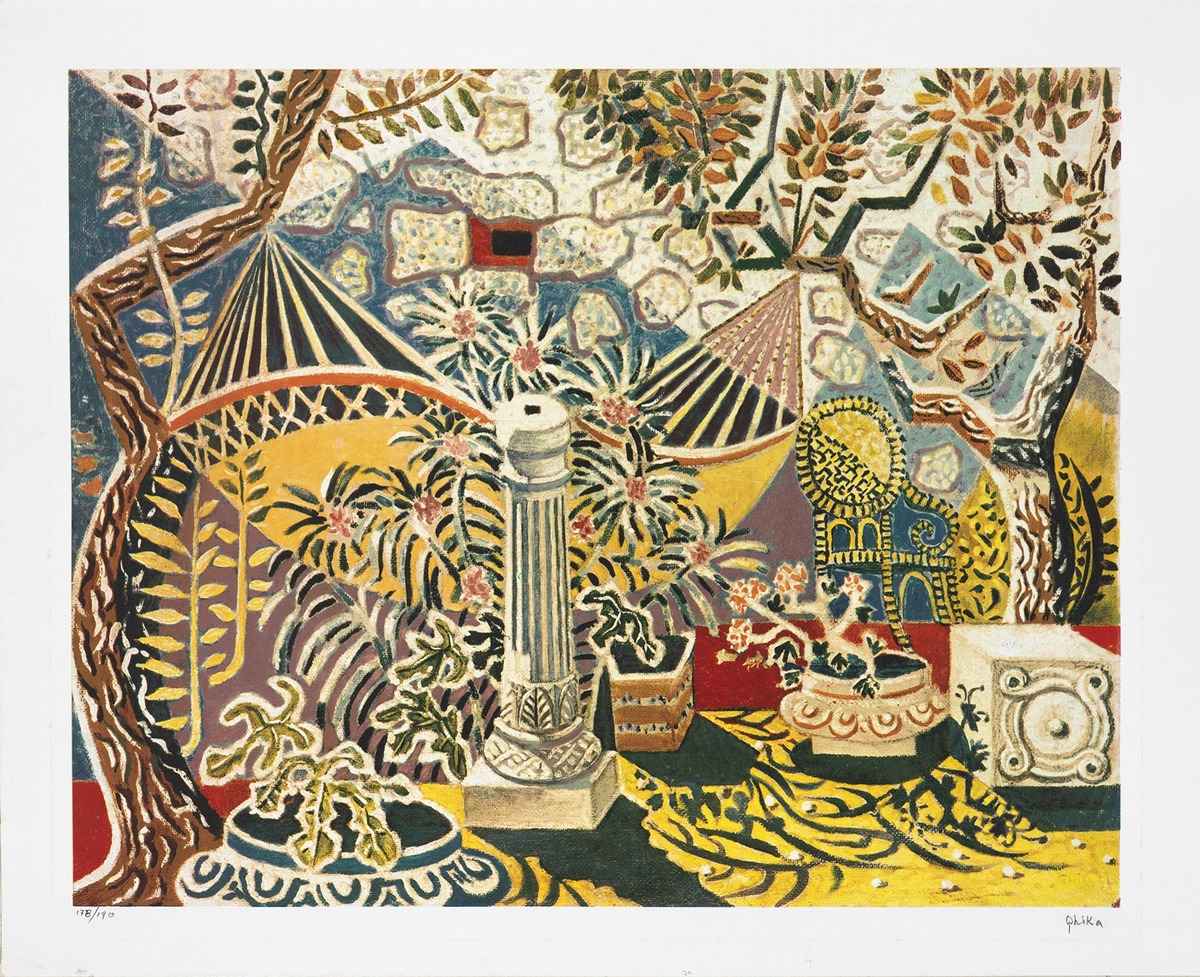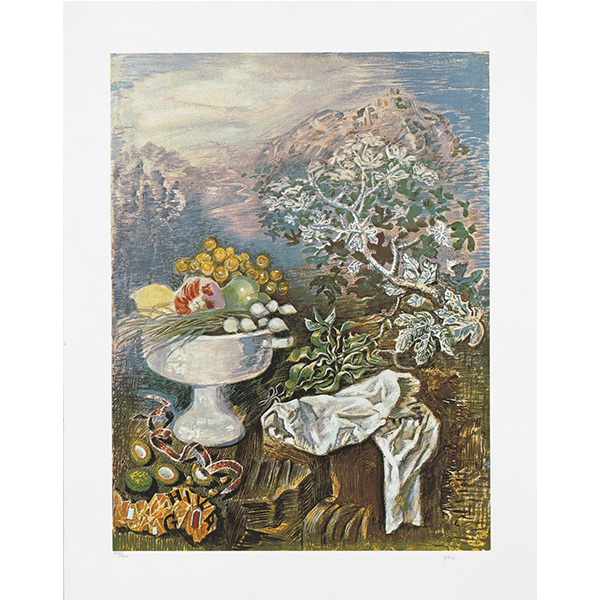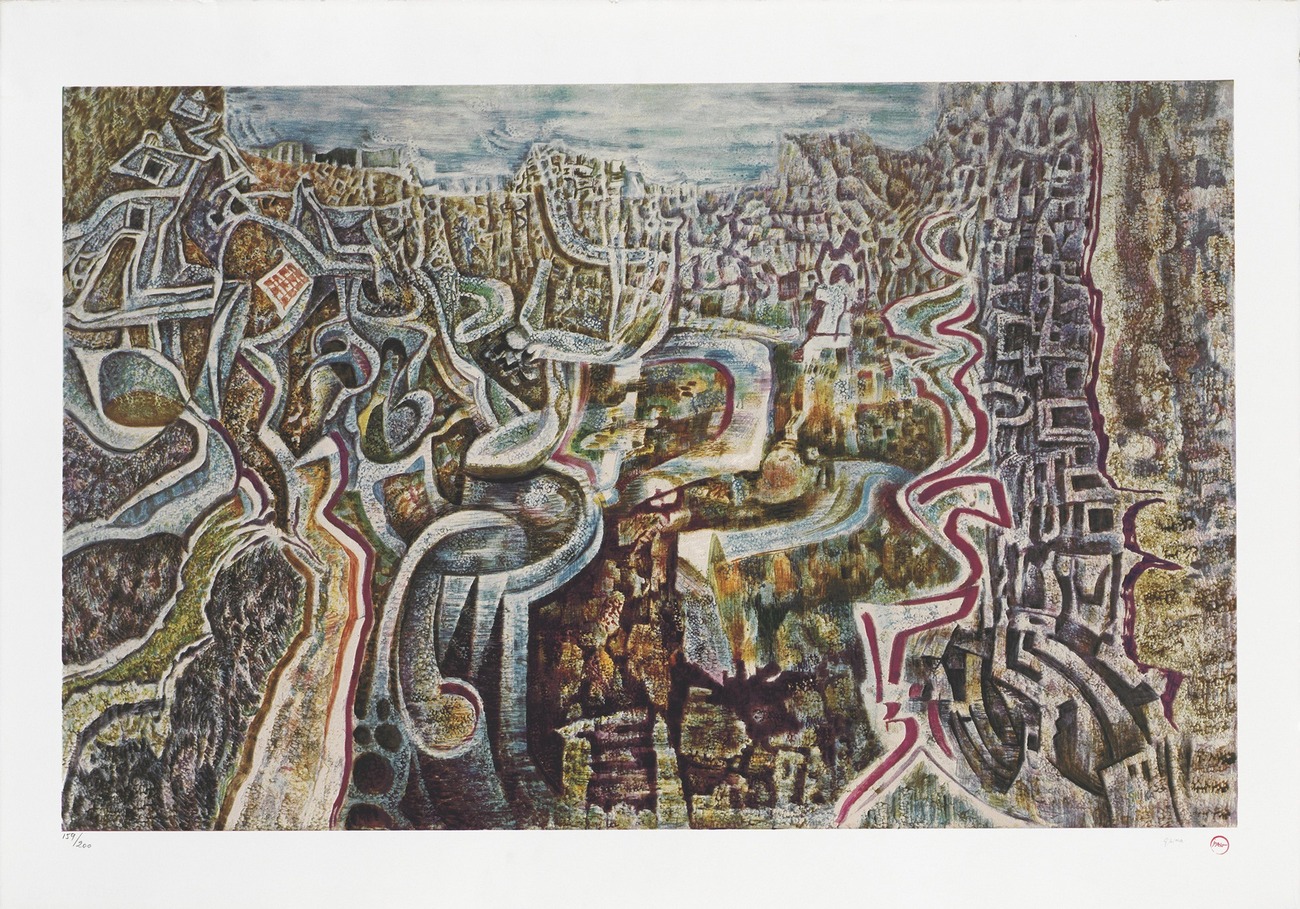Gikas Hadjikyriakos Nikos
Short biography
Gikas Hadjikyriakos Nikos (1906-1994) He was born in 1906 in Athens. He grew up in a sophisticated family environment which enabled him to cultivate his artistic talent very early, studying under painters such as Vassilis Mayassis and Konstantinos Parthenis. In 1923 he went to Paris, where he studied French and Greek literature at the Sorbonne. At the same time he studied at the Academie Ranson under Roger Bissiere, and at the printmaking studio of Dimitris Galanis. His first solo ...
Gikas Hadjikyriakos Nikos (1906-1994)
He was born in 1906 in Athens. He grew up in a sophisticated family environment which enabled him to cultivate his artistic talent very early, studying under painters such as Vassilis Mayassis and Konstantinos Parthenis. In 1923 he went to Paris, where he studied French and Greek literature at the Sorbonne. At the same time he studied at the Academie Ranson under Roger Bissiere, and at the printmaking studio of Dimitris Galanis. His first solo exhibition was held in Paris (Galerie Percier, 1927) and his second was held in Athens, along with the sculptor Michalis Tombros (Stratigopoulou gallery, 1928). In 1933, he took part in the 4th International Congress of Modern Architecture (CIAM) in Athens, along with other well-known artists. After his return to Greece (1934) he worked on the publication of the influential magazine To Trito Mati (The Third Eye, 1935-1937), a dynamic contribution towards the familiarization of the Greek public with modern art.
In 1941 he was elected professor at the School of Architecture of the Athens National Technical University, where he taught until 1958.
His art and his overall artistic presence established him as a leading representative of the ‘30s generation movement. He was one of the principal supporters of cubism in Greek painting, and of European modernism in general. His oeuvre, however, followed only in part cubist or constructivist standards, which he combined with the rich colour tones and traditional particularities of the Greek landscape, especially that of Hydra.
Printmaking, sculpture, book illustration and costume design for theatrical performances were some of his parallel artistic endeavours, as he also published studies and books on art. He was a founding member of the art group Armos and the Greek section of AICA. In 1970 he was awarded the prize for Excellence in Fine Arts by the Athens Academy, of which he became a full member in 1973. He was conferred with two honorary doctorates, by the Aristotle University of Thessaloniki, School of Architecture in 1979 and by the University of Athens, School of Philosophy in 1991. He was an honorary member of the British Royal Academy of Arts and the Italian Academia Tiberiana, and was also awarded the ‘Officier des Arts et des Lettres’ title by the French state.
He organized more than 50 solo exhibitions and participated in several group ones in Greece and abroad. In 1950, he represented Greece at the Venice Biennale. His oeuvre was presented in the following retrospective exhibitions: British Council, Athens (1946); Whitechapel, London (1968); Athens National Art Gallery (1973); To Trito Matigallery, Athens (1984); Macedonian Museum of Contemporary Art, Thessaloniki (1987); Royal Academy of Arts, London (1988). The following retrospective exhibitions were organized after his death (Athens, 1994): Benaki Museum, Athens (2006) and Andros Museum of Contemporary Art (2011).
In 1986, he donated 46 of his works to the Athens National Art Gallery, and in 1991 he donated his three-floor house, along with its household equipment and his studio to the Benaki Museum. This building (3, Kriezotou str.) was named Nikos Hadjikyriakos-Ghika Art Gallery and operates as an annexe of the Benaki Museum.
